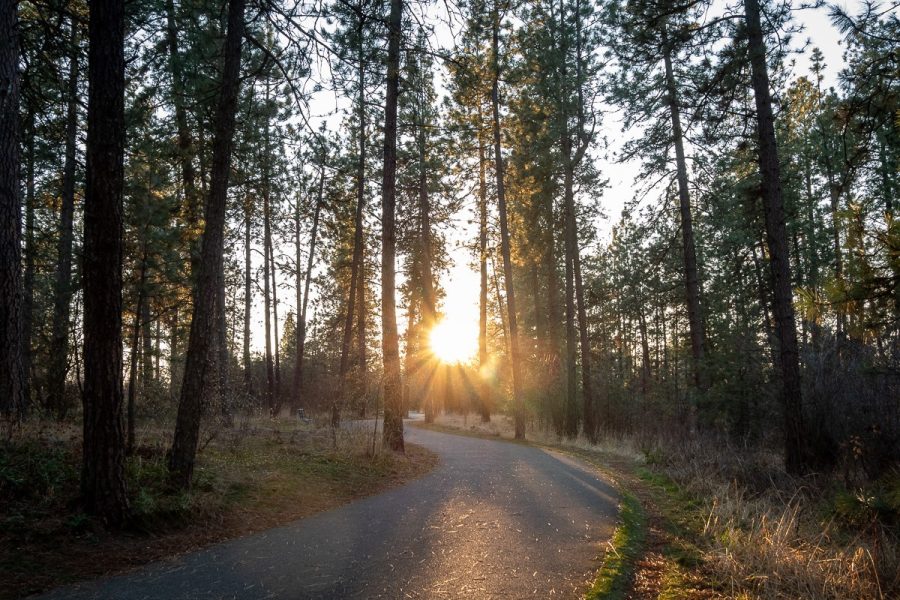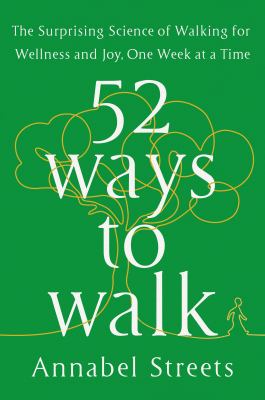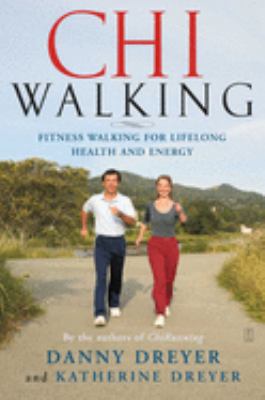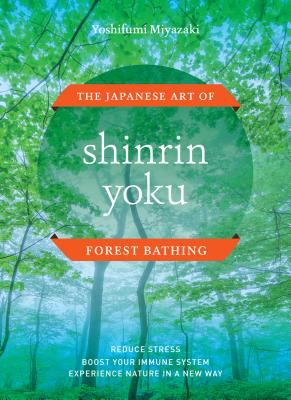Getting Active with the Library: Get More Energy & Reduce Stress
Posted on June 14, 2022 at 6:00 am

By Jane Baker
The first time I heard the term forest bathing, my immediate thought was “I bet those pine needles hurt!” All kidding aside, forest bathing is a relatively recent term (with science behind it) that gives us a good reason to go take a walk.
In 1982, the Japanese Ministry of Agriculture, Forestry, and Fisheries created the term shinrin-yoku, which translates to “forest bathing” or “absorbing the forest atmosphere.” The practice encourages people to simply spend time in nature—no actual bathing is required. The goal of forest bathing is to live in the present moment while immersing your senses in the sights and sounds of a natural setting.
Recent studies have found that spending 10 to 20 minutes a day outdoors in a city or urban park lowers stress and increases well-being and happiness, providing a positive impact on your sense of well-being.
Forest bathing is low impact, something that all ages and athletic abilities can do. Just turn off your phone and be present and fully in the moment. You can sit to forest bathe, but I prefer to take a leisurely walk without a specific destination in mind and watch how the trees sway in the wind, listen to the birds, and breathe deeply.
Not only does a walk with nature reduce stress, but it also gives you more energy. Research shows that walking for more than 20 minutes helps people feel more energized than drinking a cup of coffee or can of soda.
The human body is made for walking. Our hips, knees, ankles, and feet are unique among living creatures and are extremely efficient walking “gear.”
Those of us with sedentary jobs and lifestyles have experienced feeling exhausted, both physically and mentally, at the end of the day. Taking walking breaks during the day increases blood circulation, which helps to get more oxygen and nutrients to the brain and muscles, helping you feel more alert and be more productive. Regular walking not only improves overall health, but the change of scenery also provides a great mental reset.
If the concept of walking breaks is new to you, take it slow and start with short walks. Be safe and stay on marked trails or sidewalks, dress for the weather including sun protection, and be aware of your surroundings. Also, let someone know where you’re going and for how long, or ask a friend to join you.
Active, Outdoor Library Programs
The library has two Active Seniors Walks organized by the Striders of the Inland Northwest for those 55 and older this summer. This is a great way to meet others—you may find a new walking companion. The events are free and feature a tailgate gathering for breakfast snacks after each walk. The first walk starts at Plantes Ferry Park and goes along the Centennial Trail. The other walk is in Medical Lake and starts at Waterfront Park and includes a stretch along the lake. Registration is required for these walks.
Active Senior Walk
For adults age 55+
PLANTES FERRY PARK
12308 E Upriver Drive (Spokane Valley)
Wednesday, June 29, check in at 8:45am, walk is 9–10:30am | REGISTER
WATERFRONT PARK
S Lefevre St/Hwy 902 (Medical Lake)
Wednesday, July 13, check in at 8:45am, walk is 9–10:30am | REGISTER
Another library program happening this summer, and a great exercise to pair with walking, is Outdoor Tai Chi. Tai Chi is a low-impact way of moving that can improve strength and balance in addition to helping with stress and relaxation. The slow, fluid movements help improve leg strength, endurance, flexibility and can help prevent the risk of falling. The Otis Orchards and Moran Prairie Libraries offer a beginner’s introduction to Yang Style short form of Tai Chi presented by an instructor from the School of Tai Chi Chuan at an outdoor program. Registration is not required for these programs.
Outdoor Tai Chi
For adults
OTIS ORCHARDS LIBRARY
Saturday, July 9, 9-10am
MORAN PRAIRIE LIBRARY
Saturday, August 6, 9-10am
Books & Resources
Here are some suggestions from our bookshelves and Digital Library to learn more about the benefits of walking, Tai Chi, and other ways to stay active and connect with nature.
52 Ways to Walk, by Annabel Streets, is a short, user-friendly guide to attaining the full range of benefits that walking has to offer—physical, spiritual, and emotional—backed by the latest scientific research to inspire readings to develop a fulfilling walking lifestyle.
The library has more than 100 different books, eBooks, and DVDs on Tai Chi including the many forms, beginner’s guides, and specific Tai Chi for heart conditions and Parkinson’s patients.
Our online learning platform, Udemy has a complete beginner’s course on learning Tai Chi with an authentic Taoist Master. Access to this platform is free with an in-district library card, and you can expect to be delighted at the variety of courses offered on Udemy.
For those that want to do it all, the library has a book that combines walking and Tai Chi—ChiWalking: Fitness Walking for Lifelong Health and Energy, by Danny Dreyer and Katherine Dreyer.
Finally, for more on forest bathing look no further than the library. There are more than 20 books, audiobooks, and CDs about the concept in our collection, including Shinrin-Yoku: The Japanese Art of Forest Bathing, by Yoshifumi Miyazaki, recipient of the Agriculture, Forestry, and Fisheries Minister Award for clarifying the health benefits.
Of course, if you’re thinking about trying any of the above activities or starting a new exercise or physical activity, check with your medical provider before beginning any exercise program.

Tags: active, adults, books, digital library, forest bathing, seniors, tai chi, Udemy, walking



